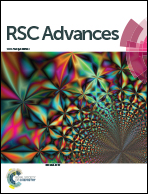Spin-dependent transport properties in a pyrene–graphene nanoribbon device
Abstract
Based on first-principles density functional theory combined with the nonequilibrium Green's function method, we have investigated the spin-dependent transport properties of a pyrene–zigzag graphene nanoribbon (ZGNR) system. The results show that this system can exhibit high-performance spin filtering, spin rectifying, giant magnetoresistance and negative differential resistance effects, by tuning the magnetization configuration of ZGNR electrodes. By analyzing the spin-resolved transmission spectrum, the local density of states, the transmission pathways, the band structure and symmetry of ZGNR electrodes, as well as the spatial distribution of molecular orbitals within the bias window, we elucidate the mechanism for these intriguing properties. Our results suggest that the pyrene–ZGNR system is a potential candidate for developing high-performance multifunctional spintronic devices.


 Please wait while we load your content...
Please wait while we load your content...